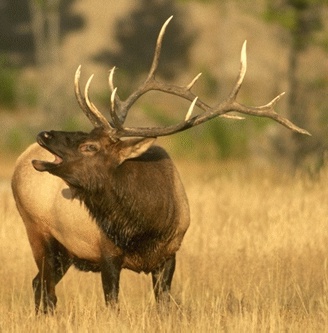We have a pretty decent system of firewood collection and try to get started in May with the goal to done by the end of August. It never works out that way but that’s the plan. We hitch our small Kubota tractor to a 4’ by 6’ wagon and head to the woods. We cut trees that are either already down on the ground or standing dead ones that aren’t home to cavity nesting birds. Don blocks up the trees and I load the wagon with the blocks. Most of our firewood cutting is done on our property but we do occasionally cut wood on an adjoining neighbor’ property. He gets his property cleaned up and we get wood.
Once home with our load, Don splits it and I stack it in the woodshed. Don used to split all our wood by hand but reality finally took hold last year and we bought a gas-powered log splitter. Wow, why didn’t we do that a long time ago?
It takes about four wagon loads to make a cord of wood. Our plan is to cut a wagon load each week from May through August; sixteen weeks will yield four cords. This year we found ourselves in September and with only about half of the wood we needed. We made a concerted effort to cut twice per week and in a fit of desperation we ordered some wood from a local woodsman. There is nothing worse than going into winter without a full woodshed.
Now, as I look out, the woodshed is full and there is even a big stack outside covered with a tarp.
Our main firewood is aspen. We like aspen because it burns clean without crudding up the chimney as quickly as the pine does. As it is we clean the chimney once during the winter and then at the end of the season. Because we use a wood cookstove as our heat and cooking source, cleaning is a bit of a chore. There are numerous baffles and other nooks where fly ash and creosote like to hide. Cleaning the chimney and stove is a two hour process from start to finish. And of course the stove has to be cool when we clean it so we usually do it first thing in the morning.
Each year we also cut a cord or so of oak to supplement the aspen. Oak is by far the best firewood and we use it for overnight or on baking day. It produces a long, steady heat that is perfect when you need to control the oven temperature closely. In Colorado, the only source of oak is our native Gambel oak. More of a large, shrubby bush than a tree, none the less, it makes great firewood and rarely needs splitting (a plus).
 We have used a wood cookstove as our sole source of cooking for more than sixteen years. It actually didn’t take long to figure out how best to use it and we can now handle about any cooking chore. In fact Don bakes all our breads using a sourdough starter he created more than a decade ago. More about that in another blog issue.
We have used a wood cookstove as our sole source of cooking for more than sixteen years. It actually didn’t take long to figure out how best to use it and we can now handle about any cooking chore. In fact Don bakes all our breads using a sourdough starter he created more than a decade ago. More about that in another blog issue.As the wood goes through the cookstove it produces a lot of ash. We keep two metal covered cans for ash collection. We use the ash in the gardens, on the pastures and spread it in the forest to recycle the nutrients back to the earth.
It’s mid-October and I think we are now ready.
From Fleur Creek Farm
